Train Station in the Jiaxing Forest
MAD Architects unveiled the design for Jiaxing’s new train station that will be the new green pulse of the city with an urban centre that brings people together for various activities and travelling will be just one of them. 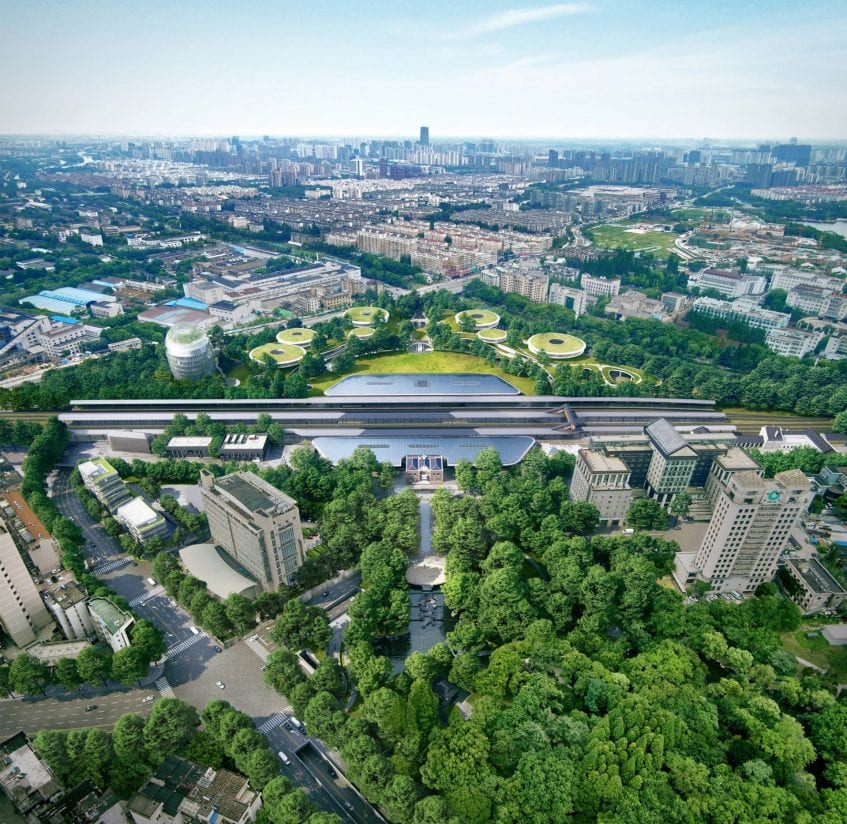 The train station situated in the center of Jiaxing, an interconnected city in southeast China close to Shanghai, Hangzhou, and Suzhou. Jiaxing is a key city for several major industries and referred to as the “home of silk” and the “land of milk and honey.”
The train station situated in the center of Jiaxing, an interconnected city in southeast China close to Shanghai, Hangzhou, and Suzhou. Jiaxing is a key city for several major industries and referred to as the “home of silk” and the “land of milk and honey.”
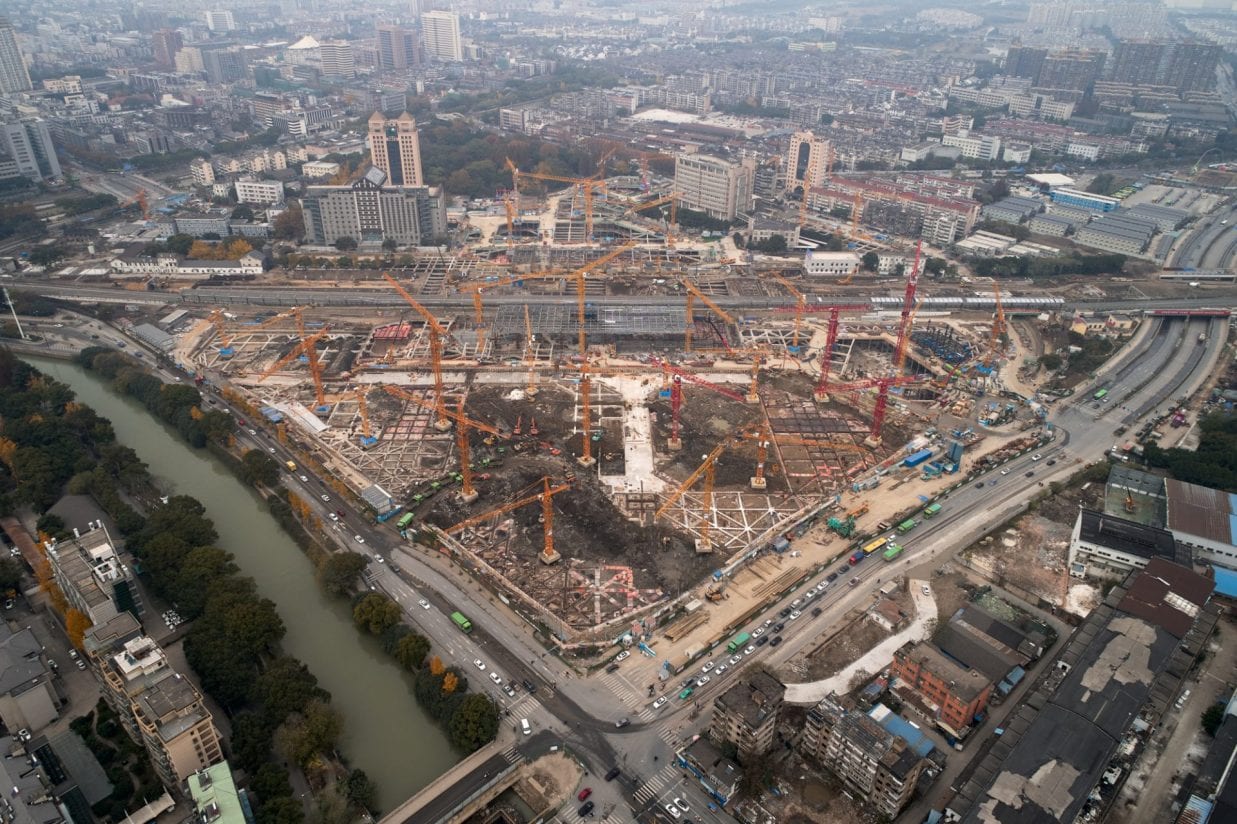
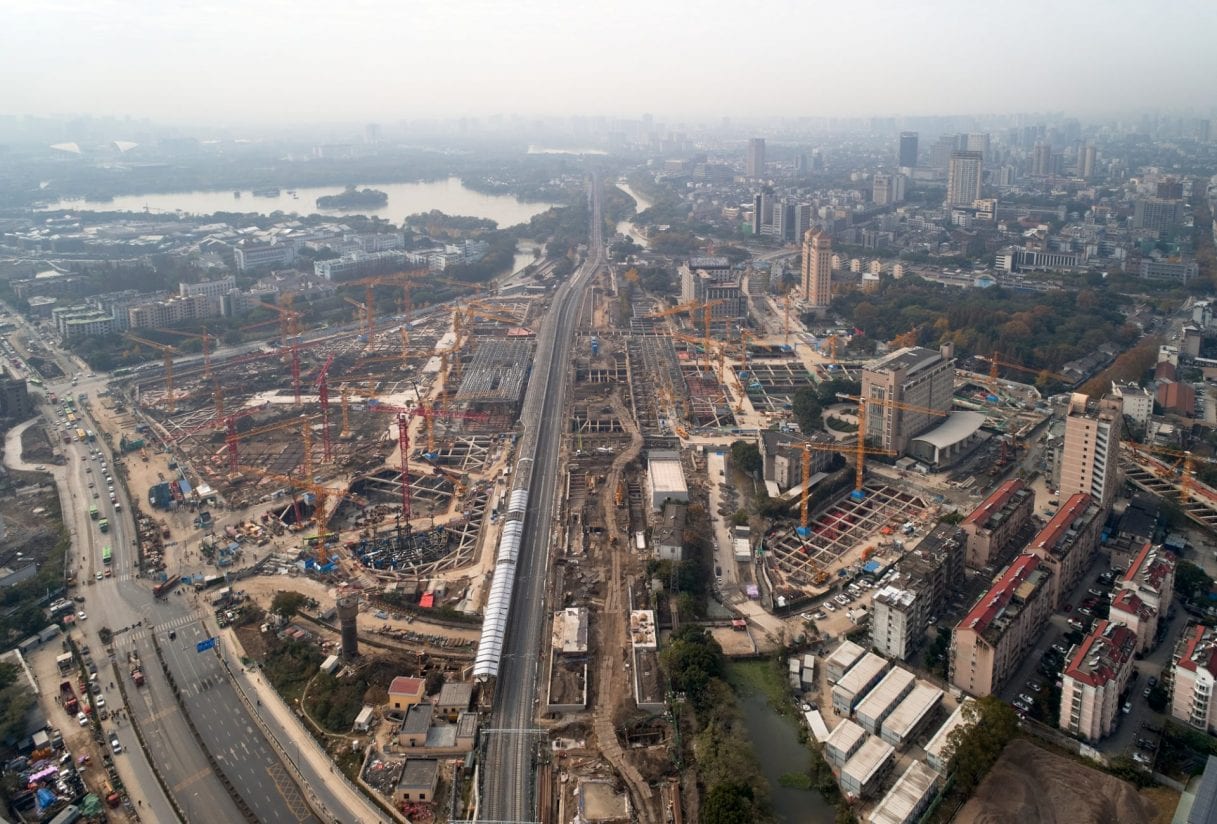 Before the renovation, the existing station had reached its maximum capacity. In addition, the disorder of the surrounding transportation system and a deficient supporting infrastructure had led to a decline in the area surrounding the station.
Before the renovation, the existing station had reached its maximum capacity. In addition, the disorder of the surrounding transportation system and a deficient supporting infrastructure had led to a decline in the area surrounding the station.
The project brief covers an area of 35.4 hectares, encompassing Jiaxing Train Station, the plazas to the north and south, and a renovation of the adjacent People’s Park.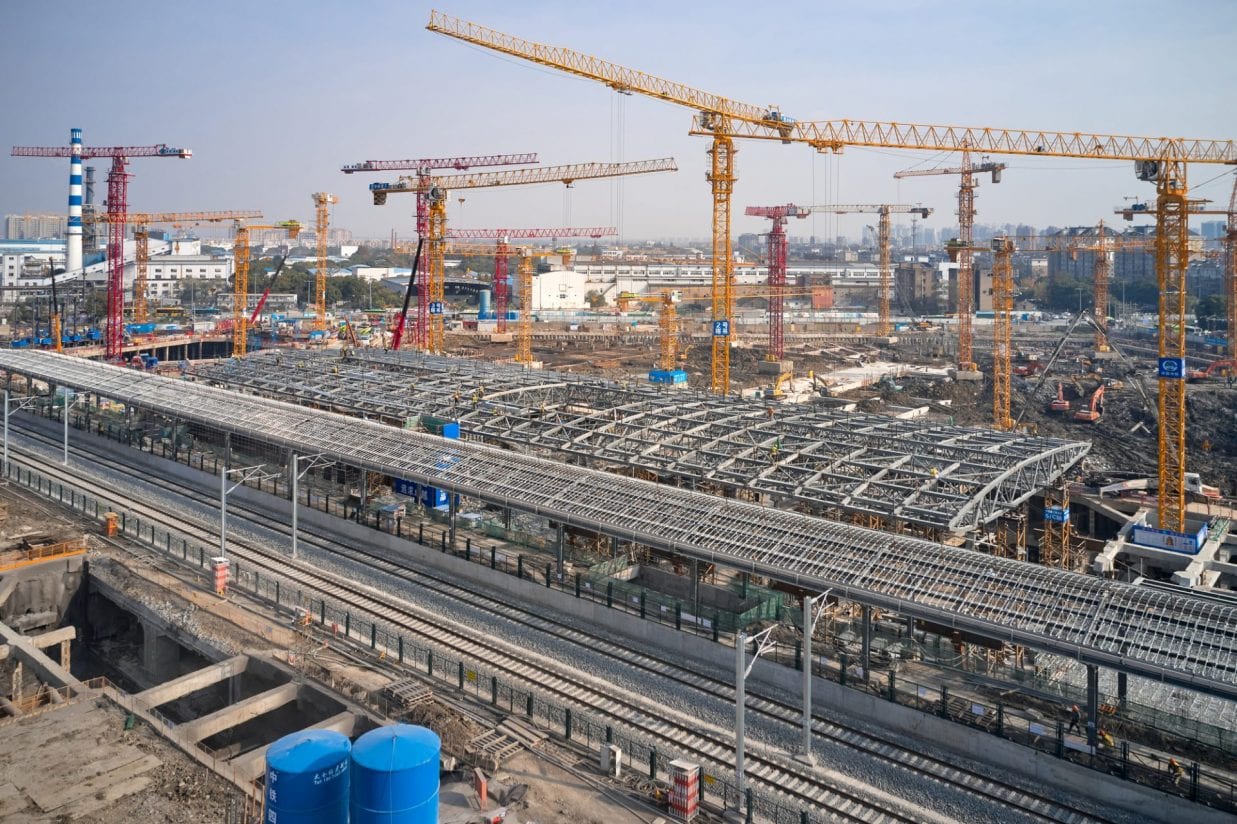 Led by Ma Yansong, the construction of the train station began at the end of 2019, and is expected to be completed by July 1, 2021. Drawing inspiration from Jiaxing’s historic and cultural contexts, MAD’s proposal includes a 1:1 rebuilding of the historic station building derived from archival studies, while creating a new train station underground.
Led by Ma Yansong, the construction of the train station began at the end of 2019, and is expected to be completed by July 1, 2021. Drawing inspiration from Jiaxing’s historic and cultural contexts, MAD’s proposal includes a 1:1 rebuilding of the historic station building derived from archival studies, while creating a new train station underground.
Ma Yansong asks pertinent questions and his designs are based on an understanding of human nature and their deep-seated need for spaces that engages than to become an economic hub.
 “China’s train stations are competing to be bigger than one another. Standing tall in the city like grand palaces, they are surrounded by large main roads, imposing viaducts, and often empty plazas. Rather than this pursuit of grand, monumental architecture, is it possible for urban train stations to create their own beautiful environment, with comfortable scales, and a blend of transport and urban functions that are both efficient and humane? Is it possible for train stations to be more than a stopover for travellers, but an urban public space that people can enjoy?” he asks.
“China’s train stations are competing to be bigger than one another. Standing tall in the city like grand palaces, they are surrounded by large main roads, imposing viaducts, and often empty plazas. Rather than this pursuit of grand, monumental architecture, is it possible for urban train stations to create their own beautiful environment, with comfortable scales, and a blend of transport and urban functions that are both efficient and humane? Is it possible for train stations to be more than a stopover for travellers, but an urban public space that people can enjoy?” he asks.
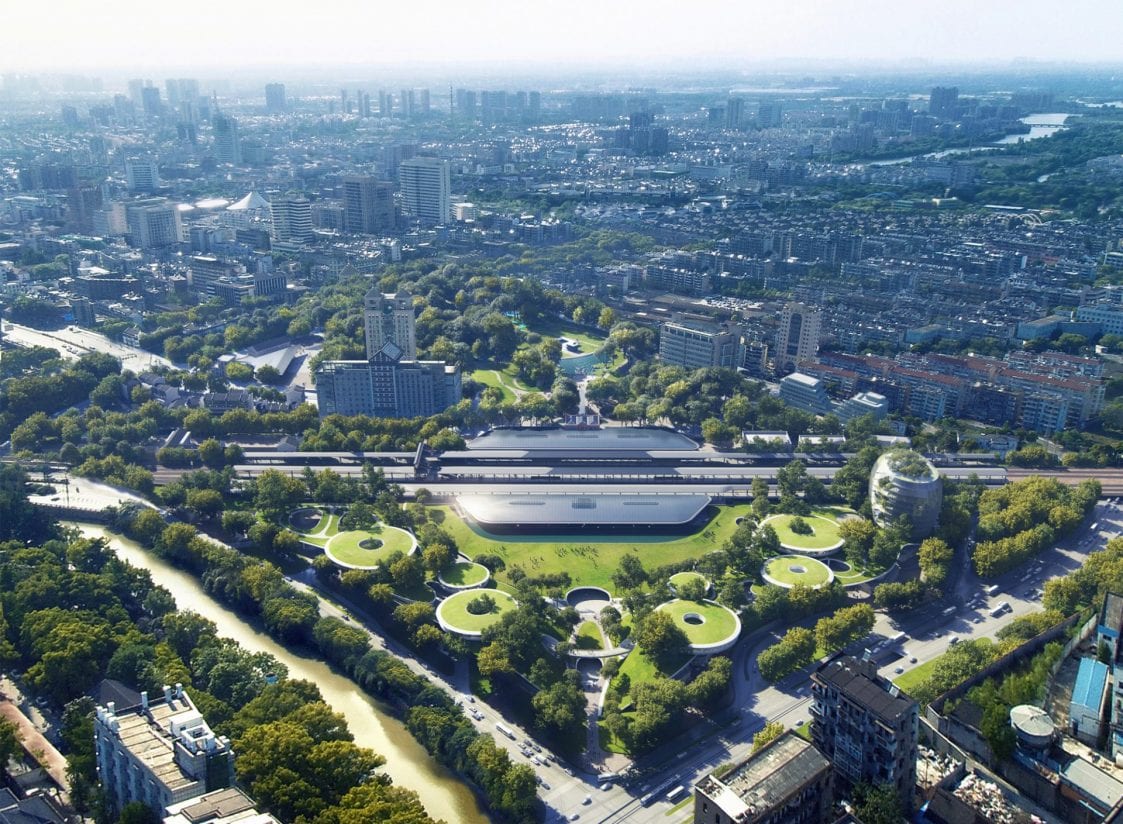 “The new station will be bright, efficient, and human-scaled, with a flood of natural light to create a friendly, comfortable environment. The main transportation and commercial functions are to be located in the basement level, allowing the ground-floor space to be given back to nature. A shared space between Jiaxing’s citizens and travellers, this new green urban centre will transform into a “train station in the forest”,” explains Ma Yansong.
“The new station will be bright, efficient, and human-scaled, with a flood of natural light to create a friendly, comfortable environment. The main transportation and commercial functions are to be located in the basement level, allowing the ground-floor space to be given back to nature. A shared space between Jiaxing’s citizens and travellers, this new green urban centre will transform into a “train station in the forest”,” explains Ma Yansong.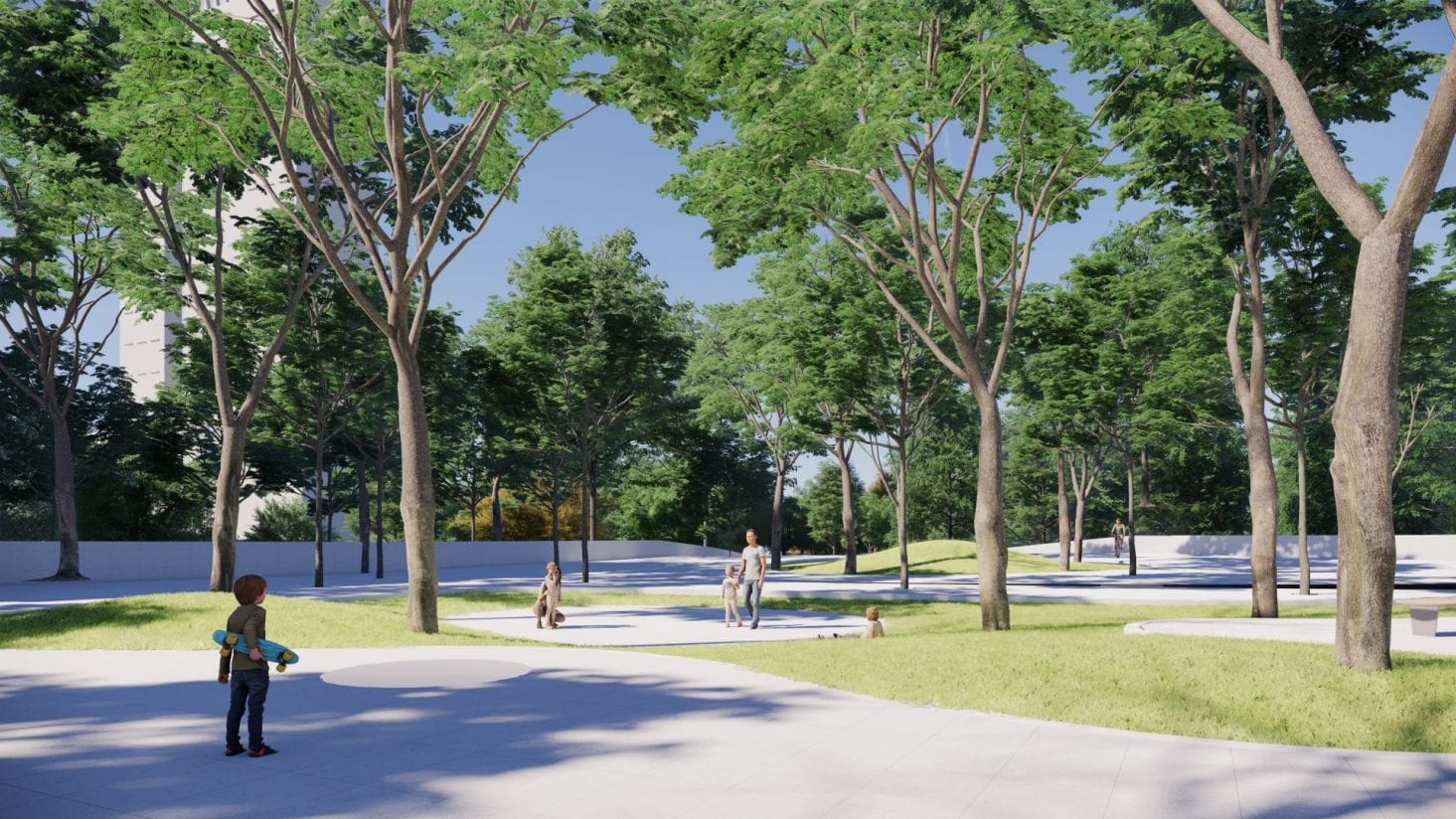 And thus, is born the 35.4-hectare urban oasis that places the busy transportation junction underground, freeing the ground floor of obtrusive infrastructure, allowing the People’s Park to radiate through the scheme into the city, and form an urban oasis.
And thus, is born the 35.4-hectare urban oasis that places the busy transportation junction underground, freeing the ground floor of obtrusive infrastructure, allowing the People’s Park to radiate through the scheme into the city, and form an urban oasis.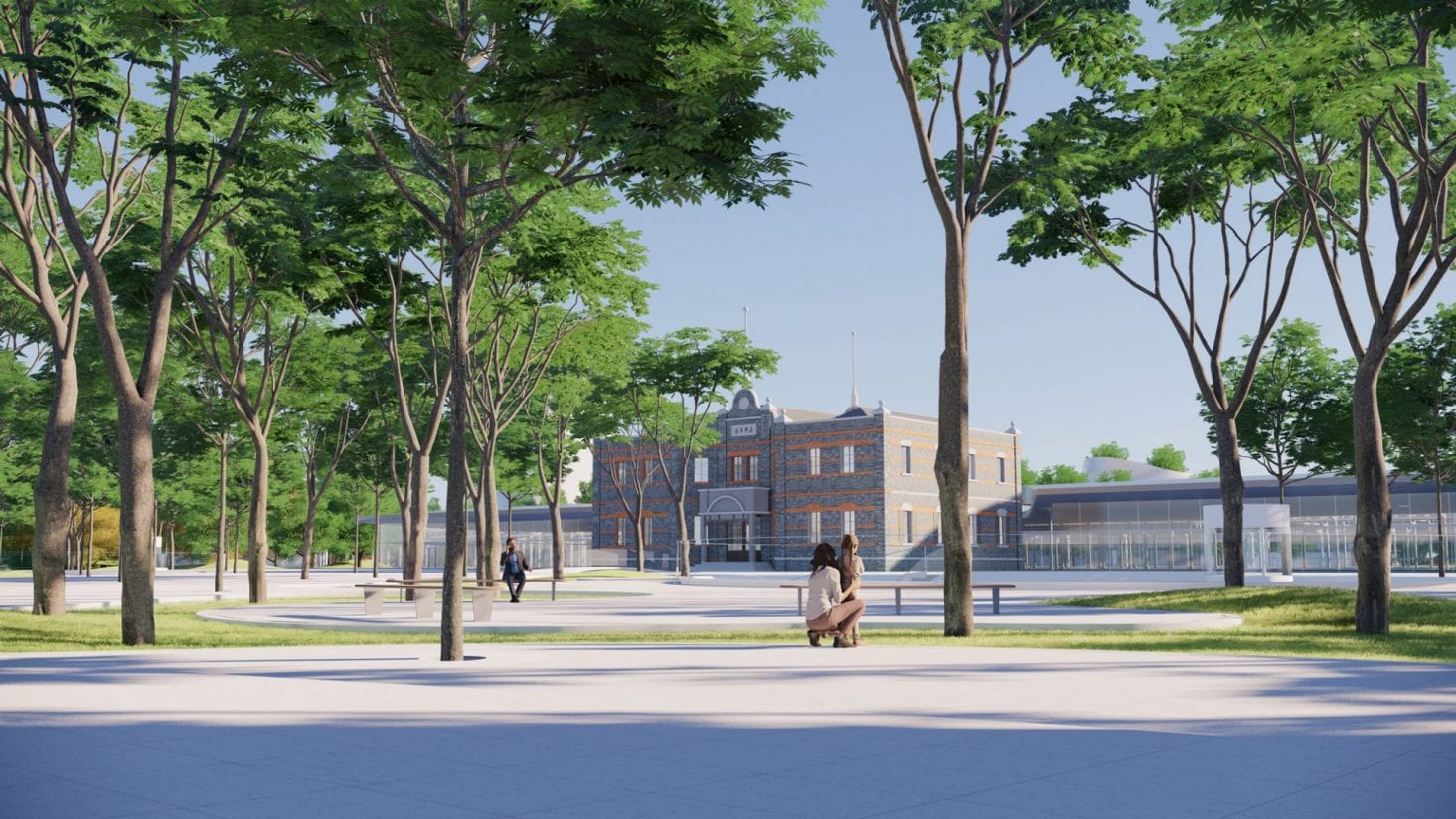 A careful consideration to landscape and massing has formed an axis with the reconstructed old station building at its core. In front of the station, a large collection of canopy shaped trees have been planted, creating comfortable, natural shades for the plaza.
A careful consideration to landscape and massing has formed an axis with the reconstructed old station building at its core. In front of the station, a large collection of canopy shaped trees have been planted, creating comfortable, natural shades for the plaza.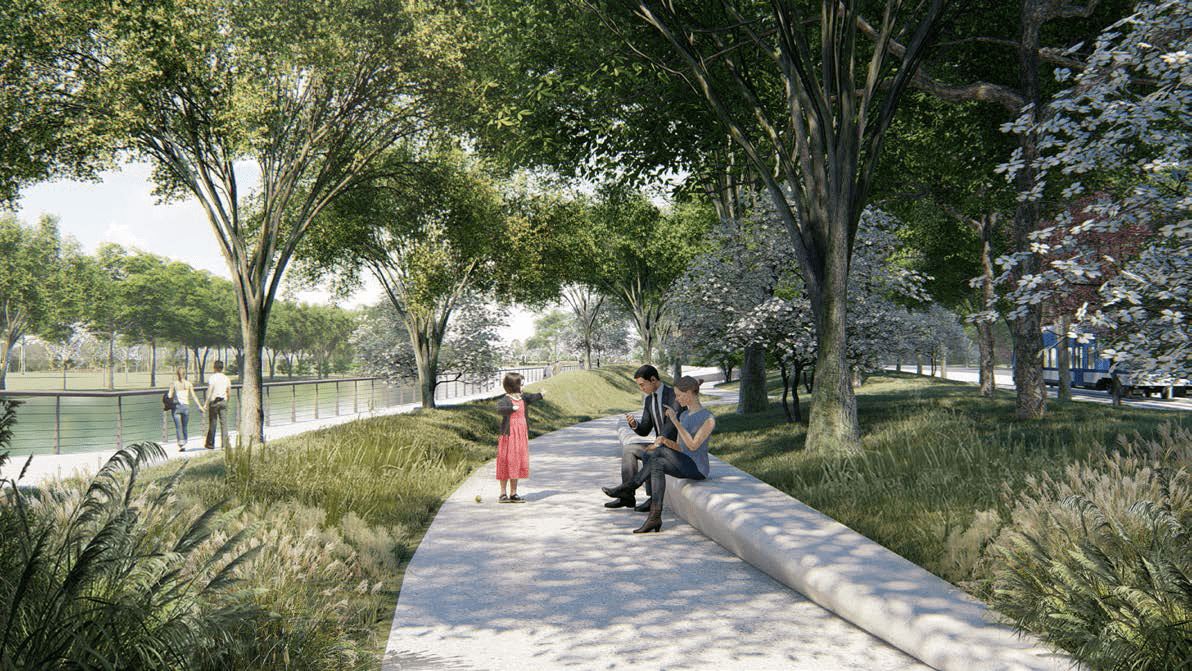 Upon completion, the scheme will become a “borderless park” where citizens and travellers can dwell and enjoy the beautiful natural environment. In contrast with the busy infrastructure beneath, the park will be a place of comfort and quiet, bringing the city center back to the people.
Upon completion, the scheme will become a “borderless park” where citizens and travellers can dwell and enjoy the beautiful natural environment. In contrast with the busy infrastructure beneath, the park will be a place of comfort and quiet, bringing the city center back to the people.
Rebuilding the Historic Station 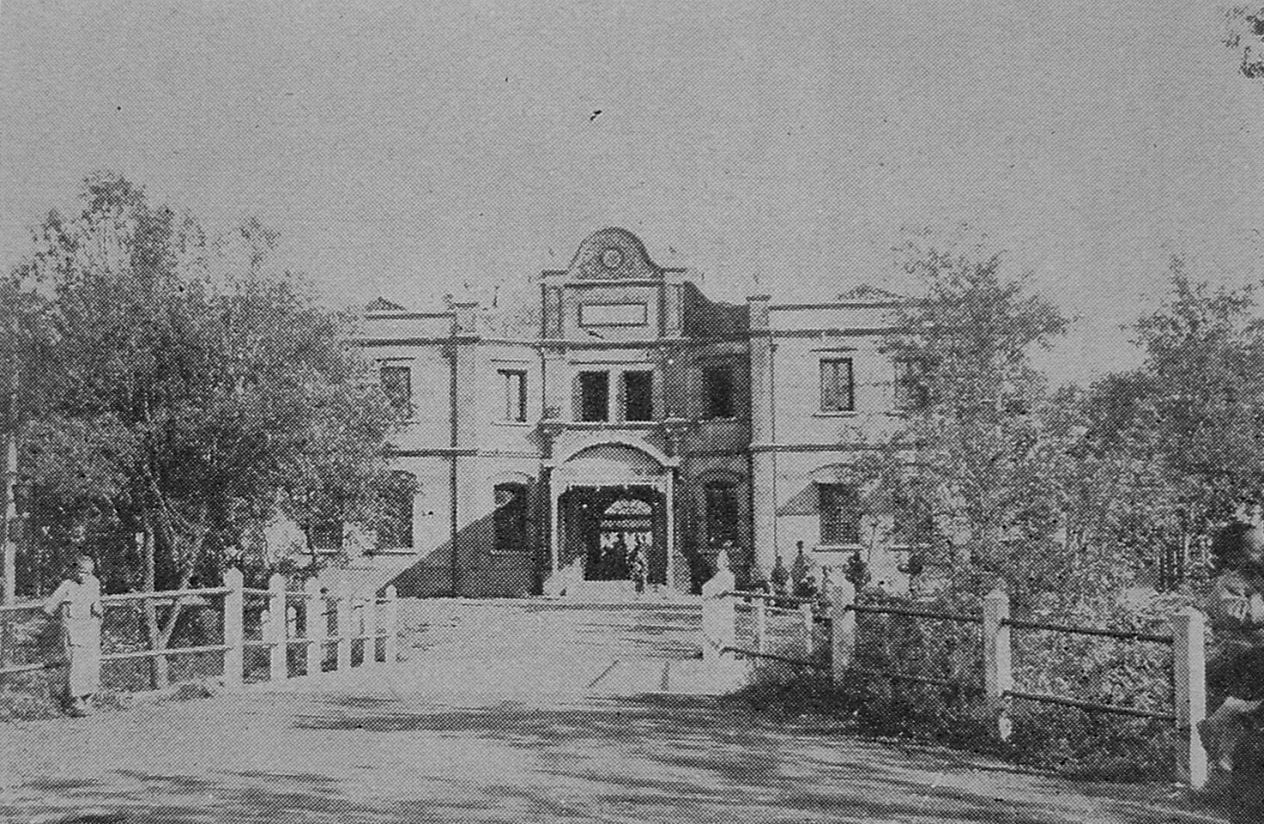 The original Jiaxing Train Station was built in 1907, and opened in 1909 as an important junction for the Shanghai-Hangzhou Railway Line. In 1921, the train station received delegates bound for the First Party Congress of the CPC, but was later destroyed by war in 1937.
The original Jiaxing Train Station was built in 1907, and opened in 1909 as an important junction for the Shanghai-Hangzhou Railway Line. In 1921, the train station received delegates bound for the First Party Congress of the CPC, but was later destroyed by war in 1937.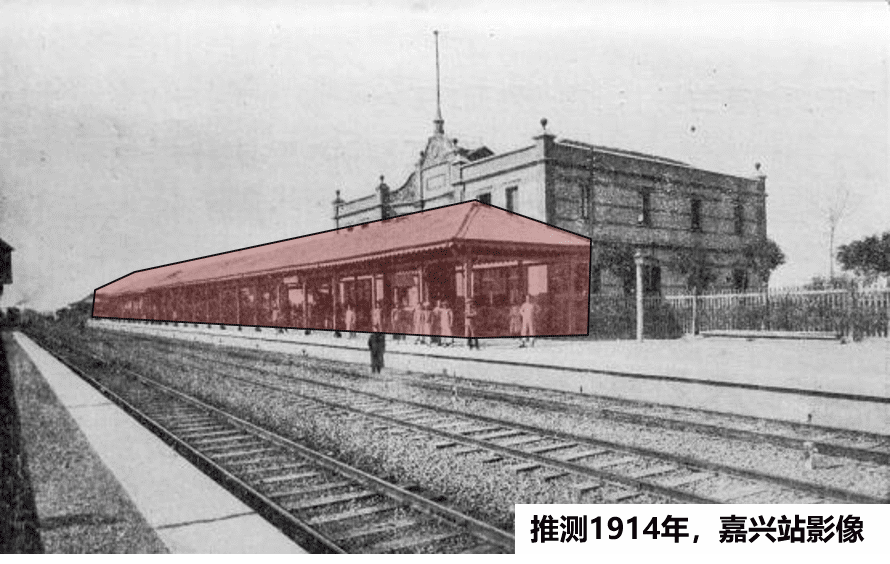 In order to create a 1:1 reconstruction of the old station building, MAD engaged with scholars, consultants and experts in heritage architecture to recover data which might aid the project. The relationship and scale between canopies, bridges, platforms, and the building were calculated, allowing for a more accurate reconstruction of the historic station and its features.
In order to create a 1:1 reconstruction of the old station building, MAD engaged with scholars, consultants and experts in heritage architecture to recover data which might aid the project. The relationship and scale between canopies, bridges, platforms, and the building were calculated, allowing for a more accurate reconstruction of the historic station and its features.
Upon completion, the old station building will become the Jiaxing Railway History Museum.
A “Train Station in the Forest”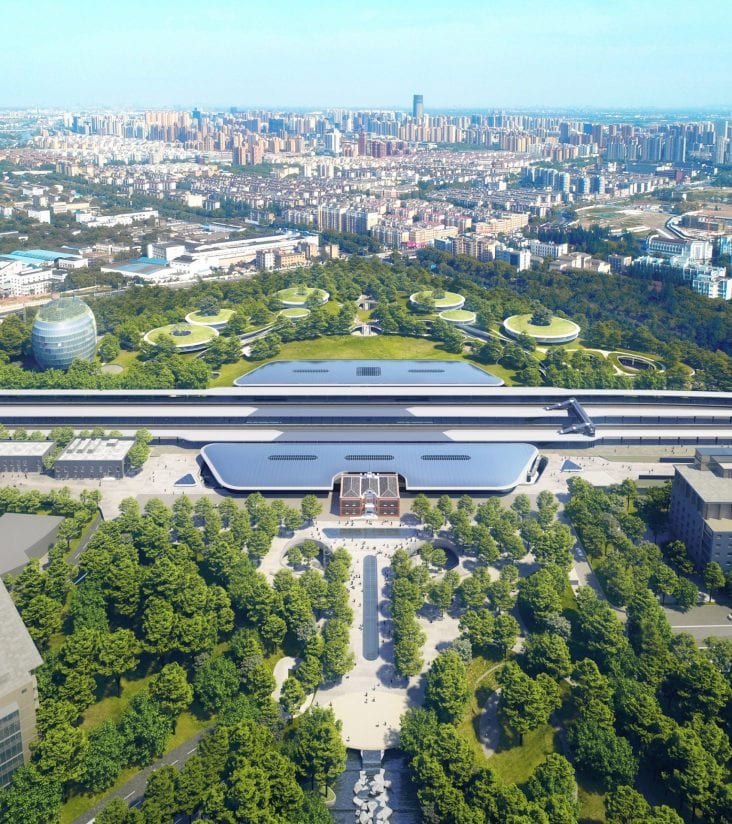 Looking south along the central axis, the rebuilt station building and the “floating” metal roof of the new station will blend with the forest trees. The station concourse, platforms, and waiting hall are hidden underground, while the building’s single-story height above ground level humbly respects the scale of the old station building.
Looking south along the central axis, the rebuilt station building and the “floating” metal roof of the new station will blend with the forest trees. The station concourse, platforms, and waiting hall are hidden underground, while the building’s single-story height above ground level humbly respects the scale of the old station building.
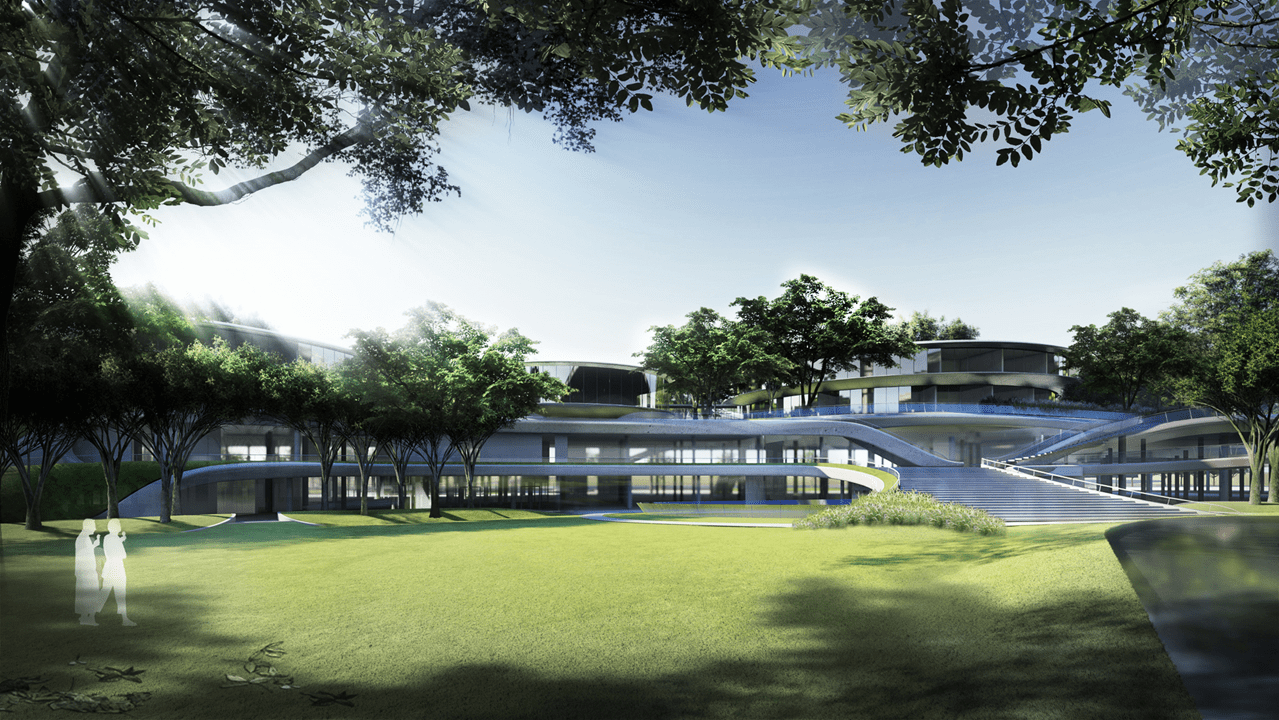
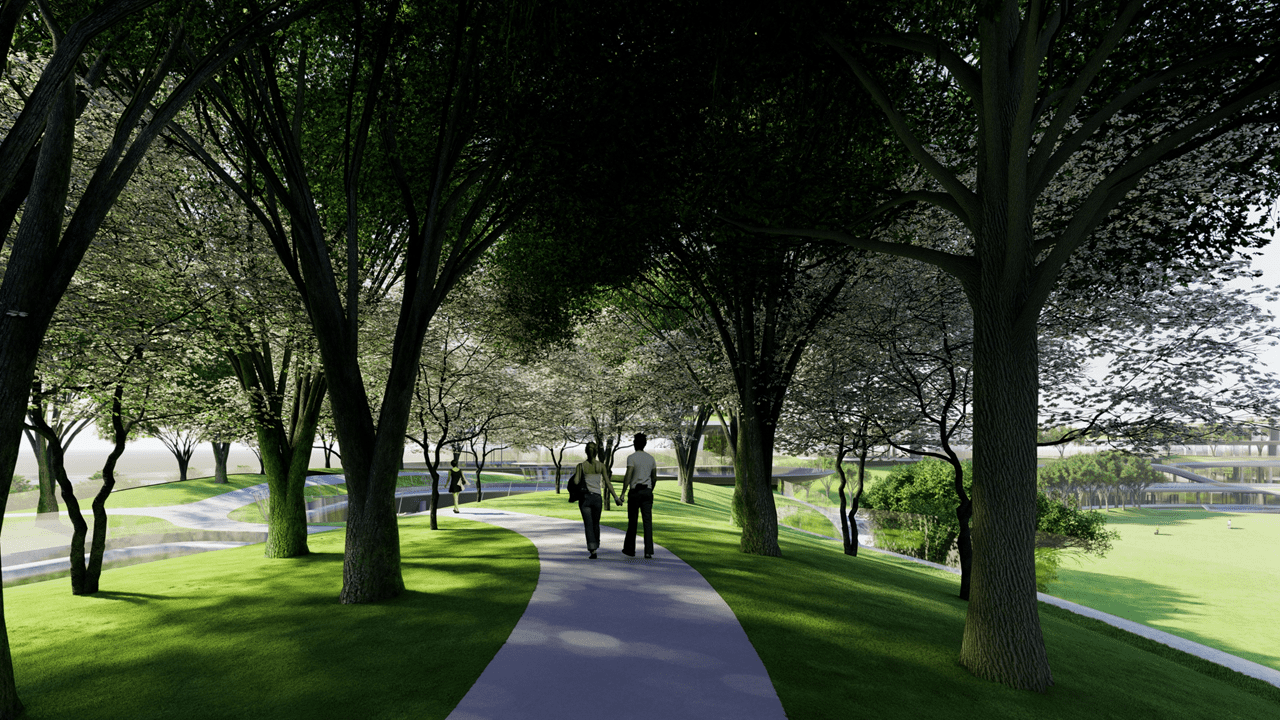 An abundance of natural light floods into the underground waiting hall through skylights and glass curtain walls on the ground floor, creating a subterranean space which is both open and bright. The internal atmosphere and tone are centred on the human scale, with the aim of creating a pleasant, comfortable experience for travellers. As people move from the waiting hall to the platforms via a futuristic underground tunnel, they observe the rebuilt old station building overhead. Here, a moment is created where old meets new, and a sharp yet composed contrast is showcased between the past and future.
An abundance of natural light floods into the underground waiting hall through skylights and glass curtain walls on the ground floor, creating a subterranean space which is both open and bright. The internal atmosphere and tone are centred on the human scale, with the aim of creating a pleasant, comfortable experience for travellers. As people move from the waiting hall to the platforms via a futuristic underground tunnel, they observe the rebuilt old station building overhead. Here, a moment is created where old meets new, and a sharp yet composed contrast is showcased between the past and future.
On the roof of the new station, solar photovoltaic panels will be installed to enhance the project’s sustainability.
A Commercial Zone underneath the “Forest”
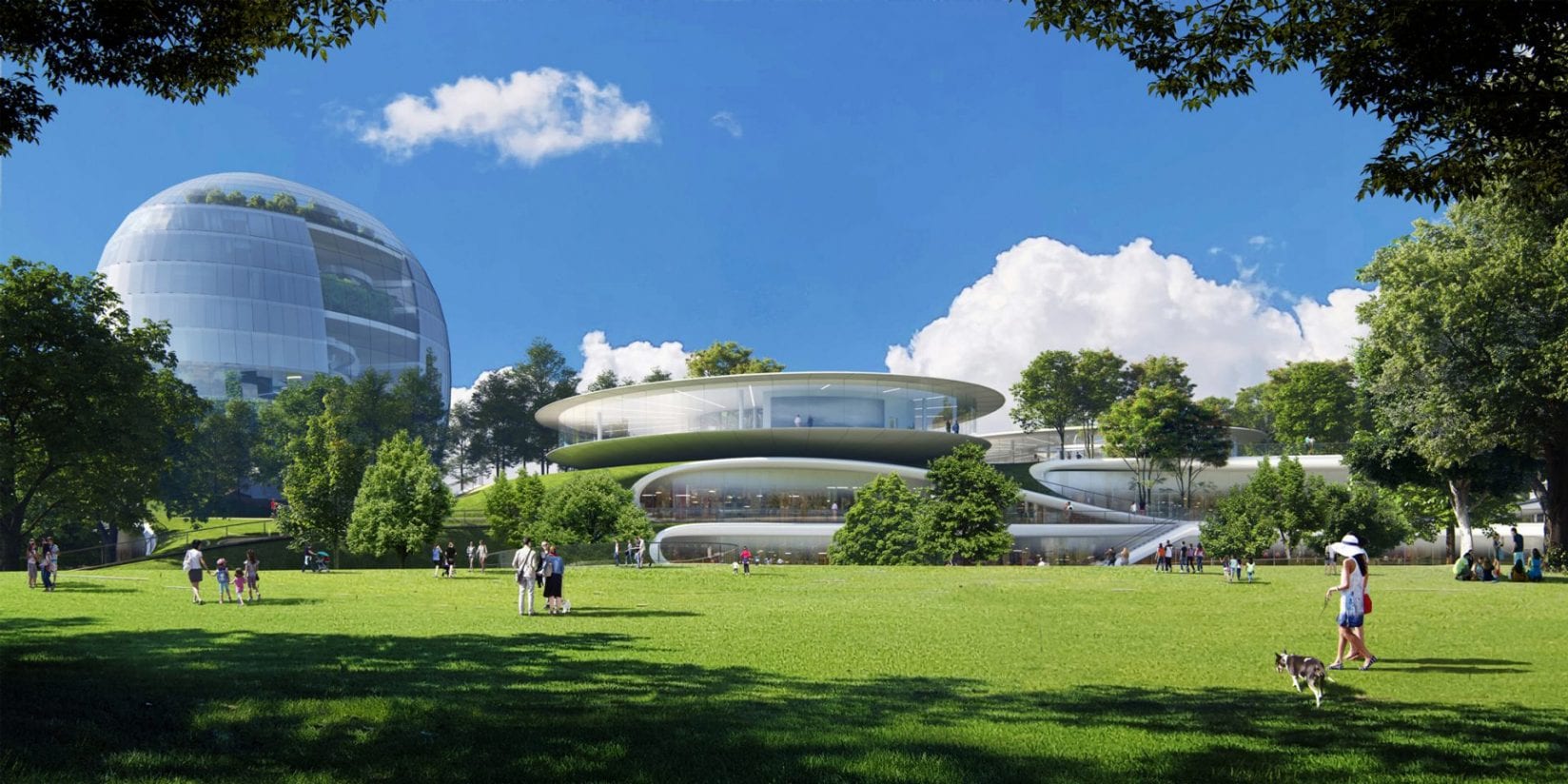
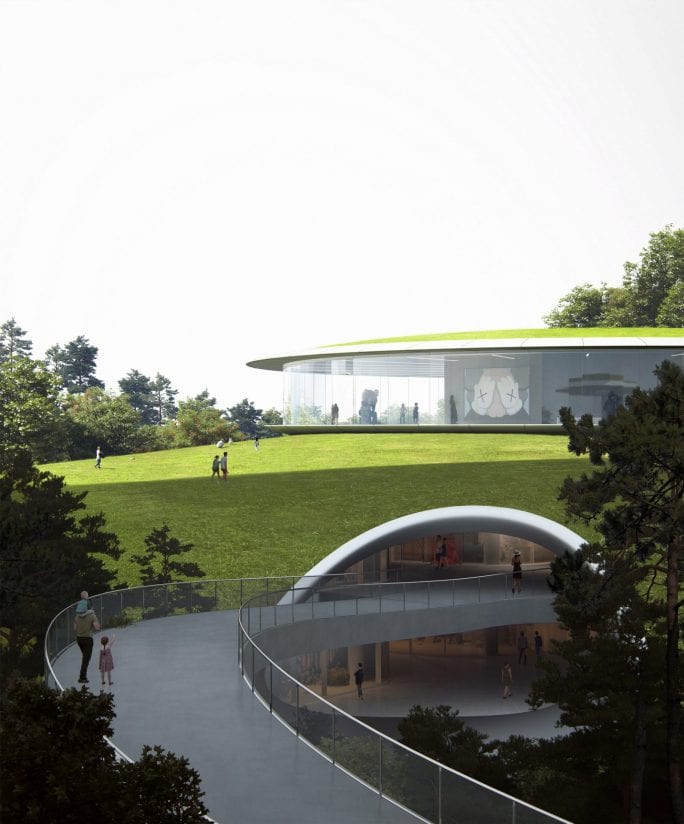 MAD’s scheme also places the station’s commercial functions underground, linking the train station with the city’s transportation hub. In addition, sunken courtyards connect the underground commercial space with the parkland above. To the south of the station, a new above-ground commercial area is created, enclosed by landscaped public lawns that can host a variety of events, festivals, concerts, or markets.
MAD’s scheme also places the station’s commercial functions underground, linking the train station with the city’s transportation hub. In addition, sunken courtyards connect the underground commercial space with the parkland above. To the south of the station, a new above-ground commercial area is created, enclosed by landscaped public lawns that can host a variety of events, festivals, concerts, or markets.
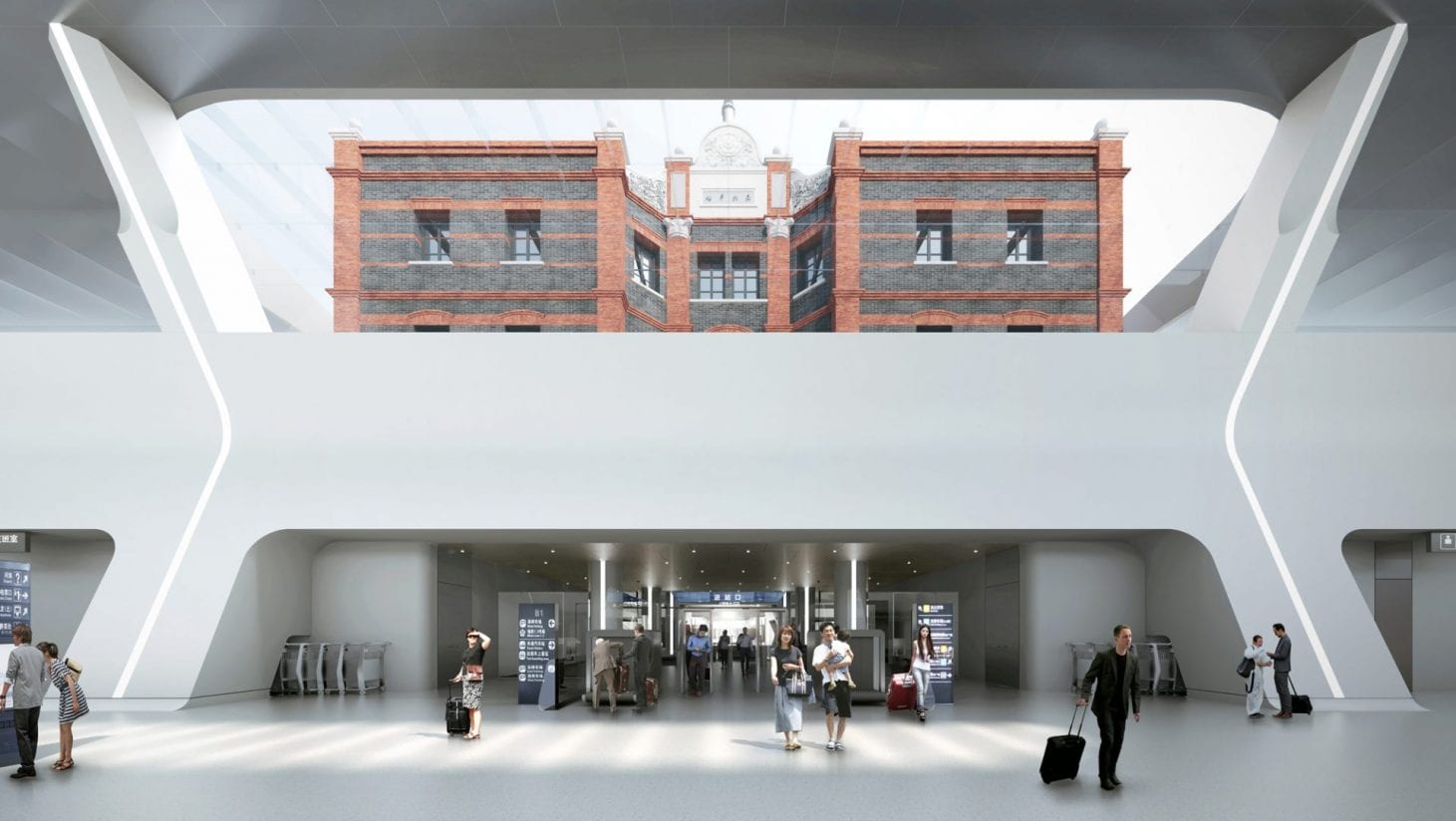
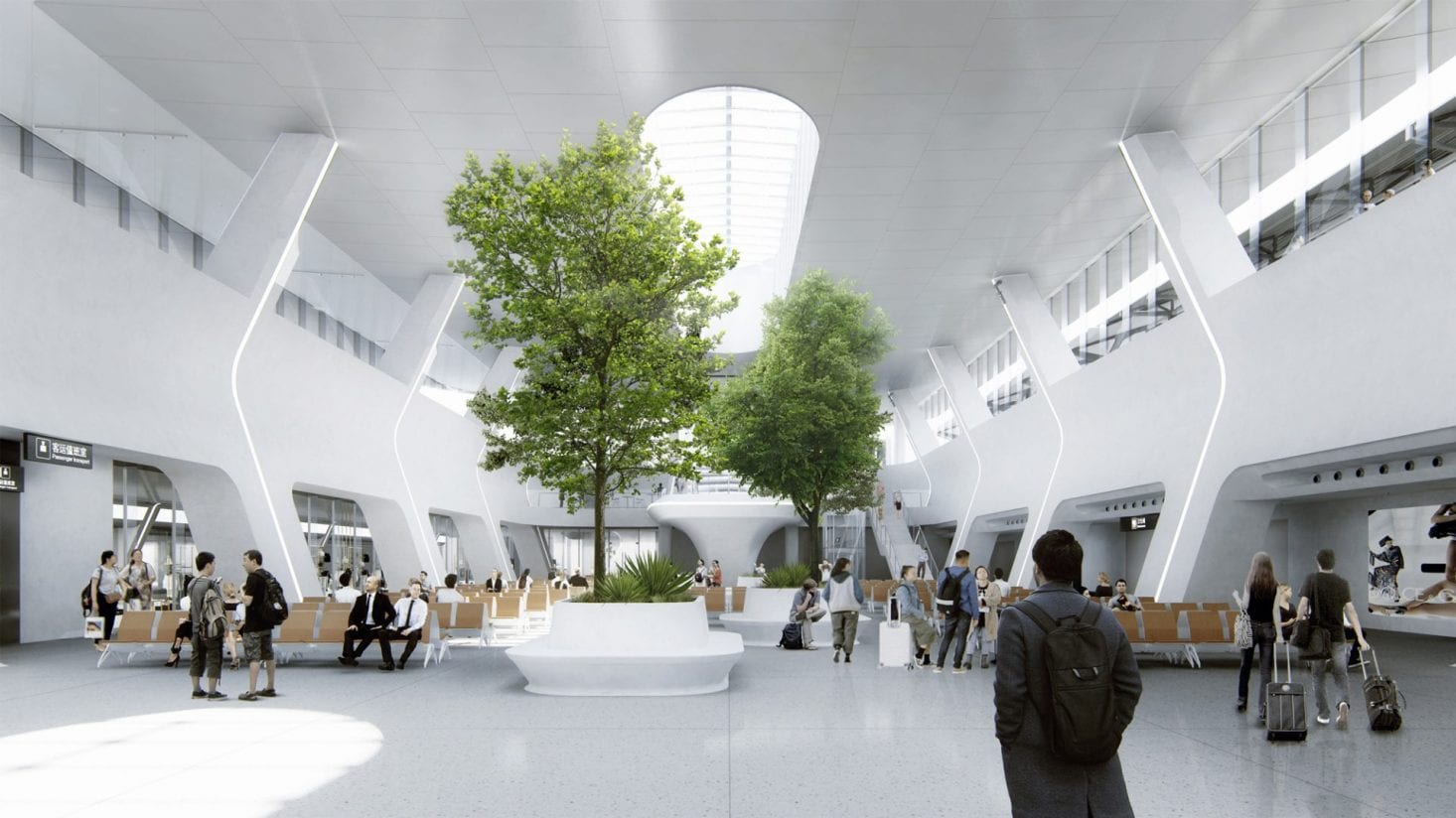
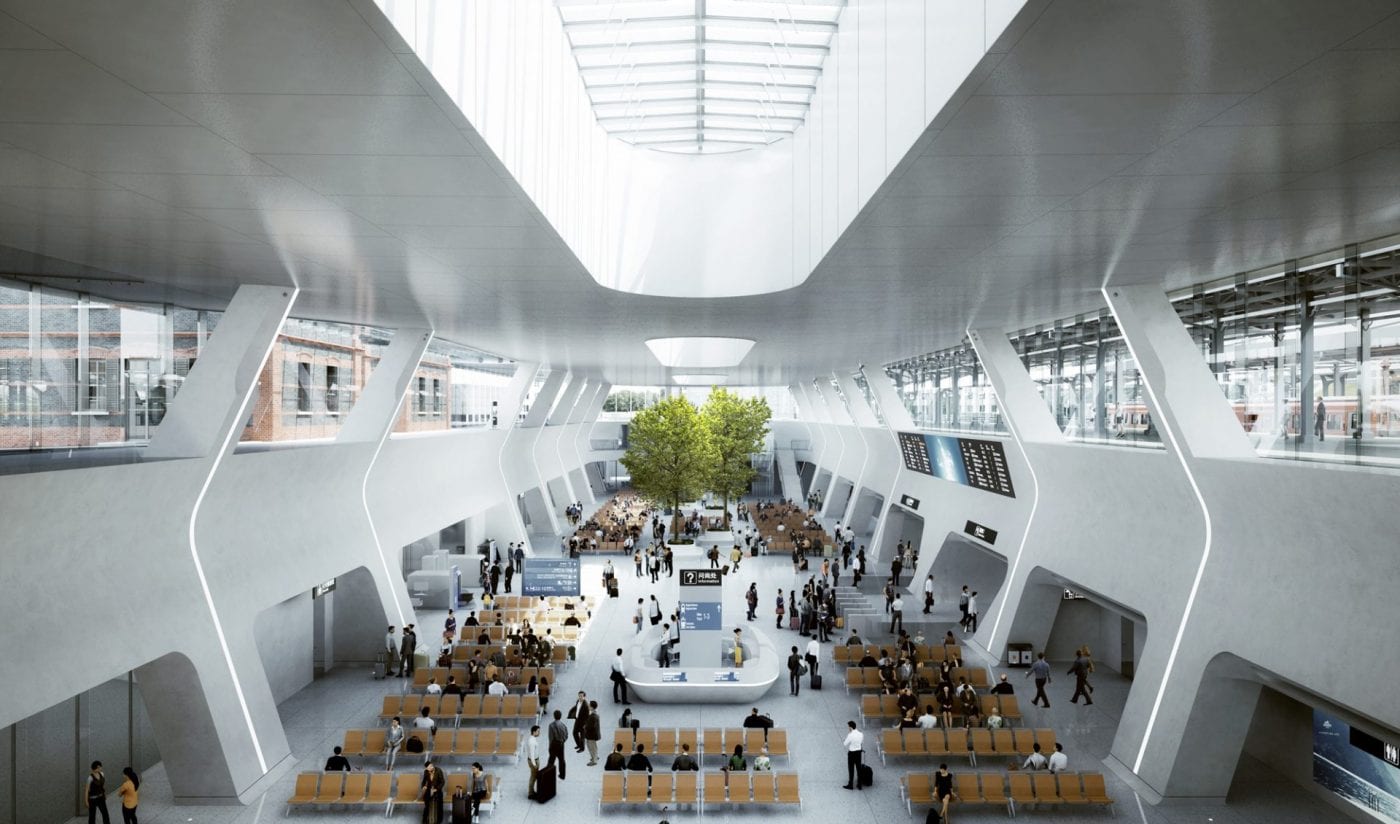 A series of transport options are linked throughout the underground system, directly connected to the sunken municipal roads. Bus terminals, a tramway, metro, car parking, and taxi stands are interconnected by the proposed scheme, creating an efficient transportation portfolio accessed from the train station, and fulfilling the demand for transport facilities created by the new commercial zone.
A series of transport options are linked throughout the underground system, directly connected to the sunken municipal roads. Bus terminals, a tramway, metro, car parking, and taxi stands are interconnected by the proposed scheme, creating an efficient transportation portfolio accessed from the train station, and fulfilling the demand for transport facilities created by the new commercial zone.
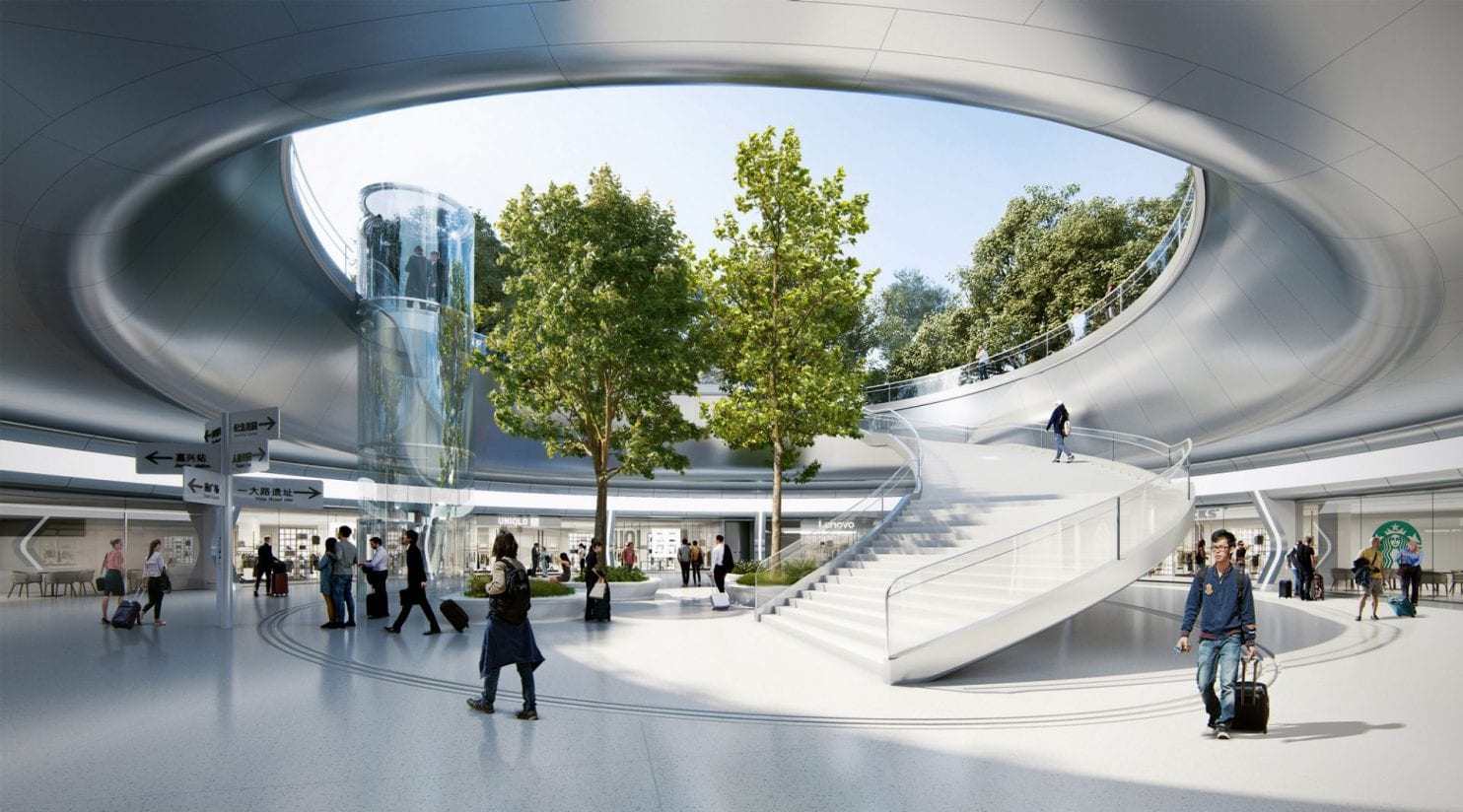
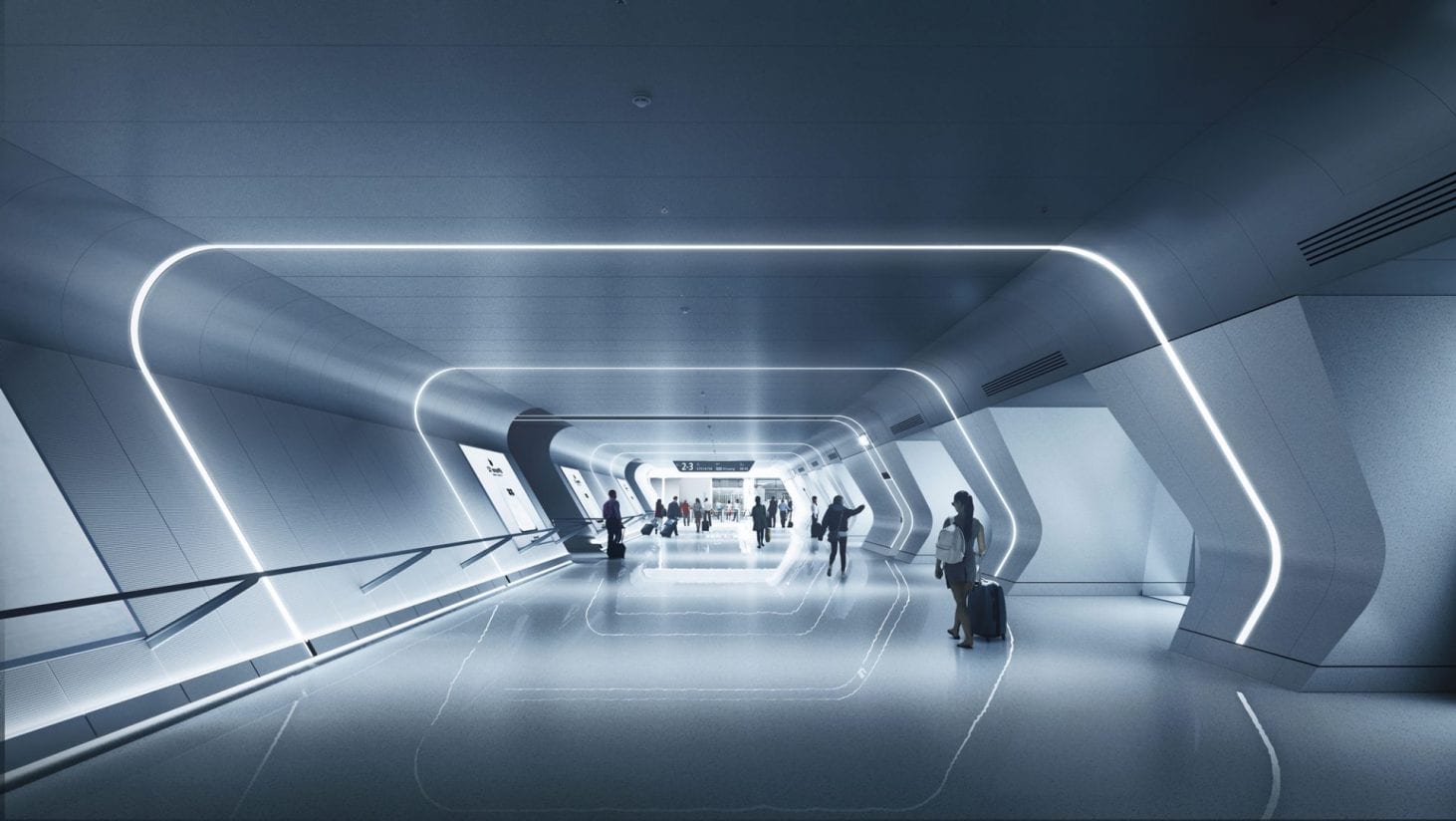 The capacity of the train station will be upgraded to three platforms serving six tracks, in contrast to the previous three platforms serving five tracks, with the main upline and downline becoming two arrival and departure tracks respectively. The overall passenger capacity is expected to reach 5.28 million people per year, with peak-time capacity reaching 2,300 people per hour.
The capacity of the train station will be upgraded to three platforms serving six tracks, in contrast to the previous three platforms serving five tracks, with the main upline and downline becoming two arrival and departure tracks respectively. The overall passenger capacity is expected to reach 5.28 million people per year, with peak-time capacity reaching 2,300 people per hour.
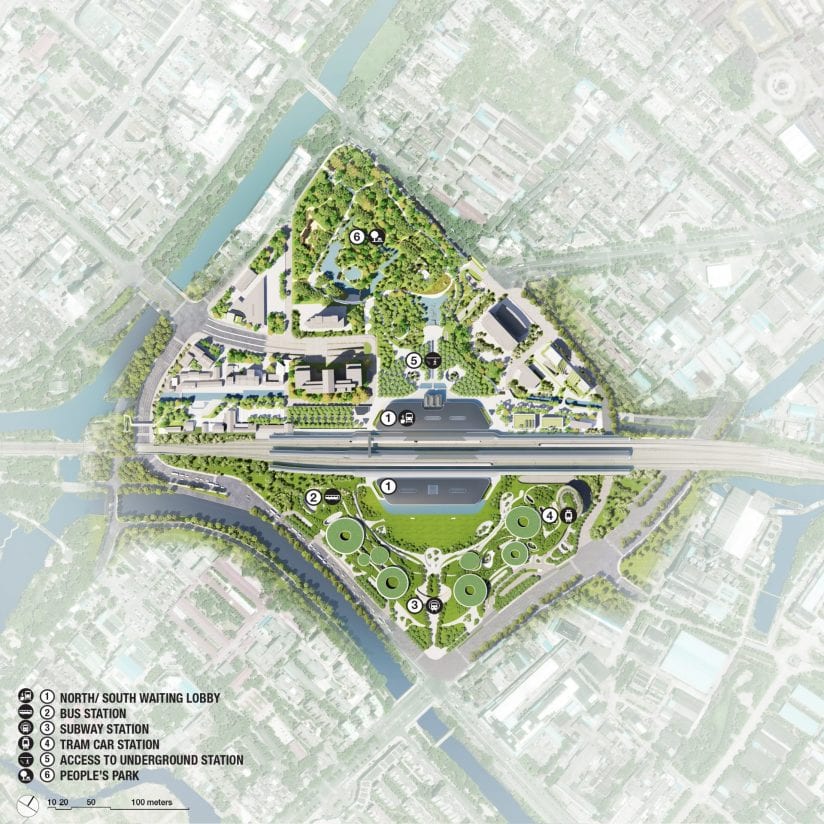
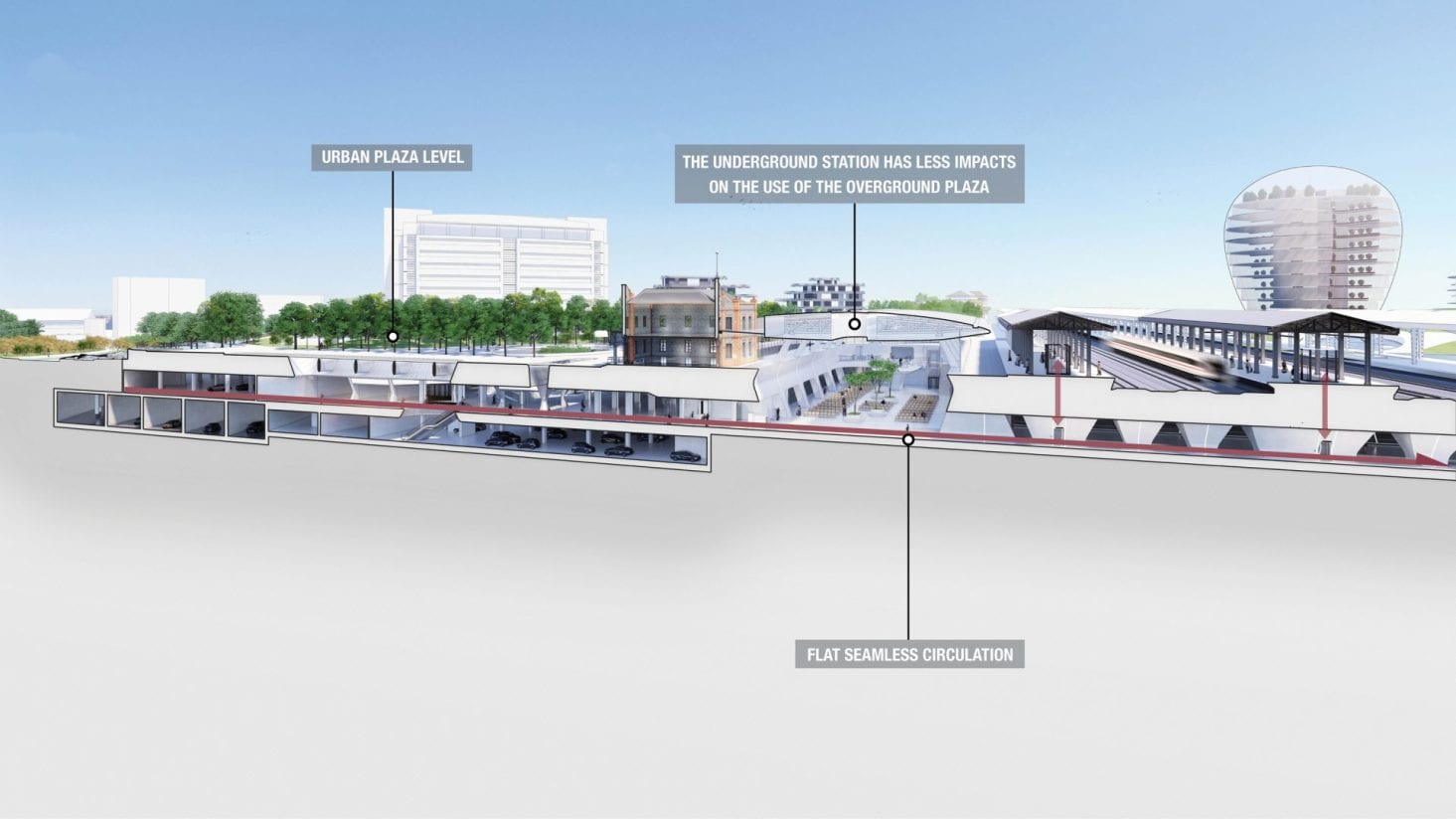 “MAD believes that a city’s best urban spaces should belong to everybody. Architecture, sunlight, nature, and fresh air should work in harmony to be shared by all; creating an environment where people can both live and travel with convenience, dignity, and comfort,” says the architect.
“MAD believes that a city’s best urban spaces should belong to everybody. Architecture, sunlight, nature, and fresh air should work in harmony to be shared by all; creating an environment where people can both live and travel with convenience, dignity, and comfort,” says the architect.
PROJECT DETAILS:
Jiaxing Train Station
2019-2021
Typology: Transportation Infrastructure
Site Area: 354,000 sqm
Building Area: around 280,000 sqm
– Xuangongnong Area: 14,161 sqm
– Yard and station building: 63,298 sqm
– North Plaza: 39,945 sqm
– South Plaza: 147,705 sqm
– Renovation of People’s Park: 12,197 sqm
Principal Partners in Charge: Ma Yansong, Dang Qun, Yosuke Hayano
Client: Jiaxing Modern service Industry Development & Investment (Group) Co., Ltd.
Executive Architects: Tongji Architectural Design (Group) Co., Ltd., China Railway Siyuan Survey and Design Group Co., Ltd.
Structural Consultant: LERA Consulting Structural Engineers
Façade Consultant: RFR Shanghai
Landscape Consultant: Z’scape Landscape Planning and Design
Lighting Consultant: Beijing Sign Lighting Industry Group
Signage Consultant: NDC CHINA, Inc.
Heritage Consultant: Shanghai Shuishi Architectural Design & Planning Corp.,Ltd
Interior Design Consultant: Shanghai Xian Dai Architectural Decoration & Landscape Design Research Institute Co., Ltd.




